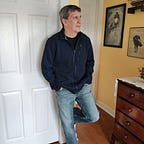Start Teaching Students to be Skeptical Thinkers
In today’s digital age, they need these skills more than ever.
In his 1972 classic A Demon-Haunted World, astronomer and writer Carl Sagan suggests new ideas should be met with rigorous skepticism until they can be proven to be scientifically sound. That is, evidence is required to prove the veracity of an idea, claim, or argument. And extraordinary claims, adds Sagan, demand extraordinary evidence.
Clearly, to cultivate a skeptical mind you need more than just a body of facts on a subject. For example, you might know that cosmologists now calculate there could be trillions of solar systems in our universe. You might therefore believe a pseudoscientific claim about the existence of UFOs without any direct evidence, because out of trillions of planets, surely some superior race of beings has built a spaceship capable of interstellar flight?
Rumors, innuendo, and connect-the-dots are not evidence, however. But if knowledge alone is not enough to protect oneself from falling for specious claims, what is?
Skepticism is a mindset toward the world that basically states, “I will not believe at face-value what is claimed without solid proof.” It uses critical thinking, that is, the manner of deriving and evaluating evidence known as the scientific method, to make decisions on whether or not something is believable.
Skeptics are not, by nature, dismissive or “negative” in the emotional sense. They merely position themselves to view an argument from all sides, judge it in a non-biased fashion, and decide whether the burden of proof has been met. It is a never-ending struggle. Skeptics are often harsh critics of themselves, constantly re-evaluating their internal motivations. This trait is perhaps the hallmark of a true skeptic. They will call anything wrong that is wrong, including and especially themselves.
There has never been a greater time in America than now to develop skepticism in our students’ young minds. Social media bombards us daily with reminders of how ludicrous the world is becoming. Flat Earth Society, UFOs, QAnon, and the Capitol riots are just a few examples of people’s willingness to force reality to conform to “alternative facts,” or views of the world we find most convenient and compelling.
One of the latest assaults on children’s senses is the TikTok “controversy” over Helen Keller and her thoroughly documented life as a blind and deaf woman who, among other amazing accomplishments, authored several books. Many young people are questioning how a woman with so many disabilities could have overcome so much. In fact, they are beginning to doubt her very existence.
This is a great launch point for a teacher to introduce skepticism to a class. The controversy is relevant in the world of children, most of whom have TikTok accounts now, thus you’ll have their attention. Begin by introducing the facts of the case objectively and dispassionately. Leave at the classroom door any judgment on your part or the students will pick up on your bias immediately and be swayed, one way or another.
Next, when the “controversy” is thoroughly understood by the class, pose a question: “Does this seem sensible to you? Is it reasonable that only now, decades after she died, that the “real” story of Helen Keller’s life should suddenly emerge on TikTok?”
(Expect a few giggles and ironic eye-rolls from the class, especially if you teach middle school, but remember this: Asking yourself whether or not an idea is sensible and reasonable is a crucial step toward evaluating a claim critically. If something smells like BS, nine out of ten times it is.)
After eliciting some initial comments from the class, probe the mystery further. Present to them the evidence: the countless books and documented evidence of Helen Keller’s impressive achievements. Further, share with the class other amazing examples of people overcoming their disabilities. Jean-Dominque Bauby suffered a crippling stroke that left him unable to speak or move, yet still wrote The Diving Bell and the Butterfly by blinking his left eyelid. Naoki Higashida didn’t let severe autism and limited verbal communication skills stop him from writing The Reason I Jump using an alphabet grid. These simple facts take but a moment to Google but effectively strike a death blow to the notion that Helen Keller must have been some sort of supernatural being and not a sympathetic real person.
Even though you may have turned your class into skeptics about the Helen Keller controversy, it is not enough to stop there. Gen Z spends a significant amount of time online. Children should be taught the cognitive biases that invade our thinking and muddy our perception of reality. And they should, above all, be given plenty of practice in school on how to ask the right questions. Peeling back the layers of dubious claims found all over the Internet and fed into their social media streams starts with asking the simplest question of all: Is this sensible?
Gullibility, like skepticism, arises from the same need for sense and order in the world. However, skepticism depends on rock-solid reasoning and facts to make its case rather than hasty speculation. It is our mission, as teachers, to equip our students with the tools and attitude to become skeptical thinkers.
Subscribe to Insights from Educate for a midweek dose of professional learning and inspiration with the latest news and research from the education industry.
